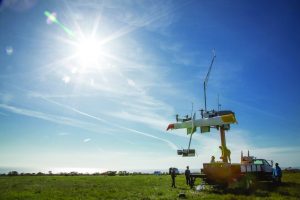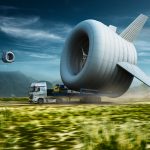The effects of seismic activity and wind excitation on tall structures can run the gamut from costly repairs to dangerous destruction.
Engineers are now helping to reduce such ground-level damage with technology originally created for a higher calling: the space program.
“Back in the early ’90s or so, we started getting more into providing dampers for structural control of buildings and bridges and other types of civil engineering structures using the technology we developed for NASA and the military,” said Alan Klembczyk, vice president of sales and engineering for Taylor Devices.
Taylor Devices is a manufacturing firm that’s been incorporated since 1955. It manufactures custom dampers, shock absorbers, rate controllers, and all types of energy-management devices.
Military and Aerospace Technology
“We’ve had a company strategy to balance our marketplace for applications for 50 percent military and aerospace and maybe 50 percent industrial and commercial,” Klembczyk said. “And we use a lot of the technology that was developed for military and aerospace applications, including NASA, for the benefit of the structural engineering community.”
Taylor creates seismic dampers or structural dampers that are able to stop the damage from seismic activity or high-wind events before it can happen.
“Our basic seismic damper uses fluid to turn mechanical energy into heat energy,” Klembczyk said. “We now have approximately 700 applications worldwide that uses our dampers for use on buildings and bridges. These also include wind applications where a building might be subjected to wind excitation.”
Although most of Taylor’s public work is for buildings and bridges, the technology will work for structures such as wind turbines as well.

How it Works
Nondisclosure agreements prevent Klembczyk from discussing details on how Taylor’s dampers will be used in the wind industry, but he said the technology works in much the same way it does for other structures.
“A wind turbine, being a tall structure, is very similar to a tall skyscraper, and wind can excite that structure and could cause cumulative damage and could also result in unacceptable deflections and accelerations during wind events,” he said. “So very similarly, you could apply distributive damping inside the tall wind turbine, so as the wind excites it back and forth, instead of that turbine flexing back and forth, (the damper) would turn that energy into heat energy by putting that energy into the fluid of the damper, and it could control the oscillations that way. We’ve done tall buildings. We’ve done wind turbines. And we’ve actually done stadium light poles in a similar fashion as well.”
The bottom line is the dampers can help decrease the maintenance needed for a wind turbine, which makes it more economical and adds years to an asset, according to Klembczyk.
“If you take a look at the amount of investment you have to make in order to put direct acting dampers into a structure, the cost is relatively small when you look at saving the maintenance cost that would occur normally,” he said. “Our dampers will reduce deflection and acceleration and therefore structural stress in a wind turbine.”
Skinny Buildings
As an analogy, Klembczyk points to the desire to build tall, but skinny, buildings.
“Many tall buildings are being made with a higher slenderness ratio, and a slenderness ratio is basically the ratio between the width and the height of a building,” he said. “So, more and more tall buildings are being built these days that have much lower frequencies than they used to. The buildings are becoming taller and skinnier, and therefore have a lower frequency to the point where the occupants of the building could actually be subjected to accelerations that would physically make them sick.”
Because of that, ISO standards require building acceleration in high-wind events to be held below a certain level.
“Many buildings now don’t have enough damping in them in order to satisfy the acceleration criteria for occupant comfort,” Klembczyk said. “So adding damping to structures can easily bring that acceleration criteria back down, so the occupants in the building would not be subjected to high acceleration. That’s becoming more and more prevalent in structural engineering these days in order to satisfy wind excitation.”
Taylor got involved in seismic damping applications in the 1990s when the many benefits dampers could offer to buildings and bridges and other structures became apparent, according to Klembczyk.
“One of the more significant product lines that we offer that nobody else in the world offers is an infinite life, low friction damper,” he said. “And these are of particular interest to structures that are under continuous excitation from either pedestrian motion or wind excitation.”
This type of damper uses a special metal bellows seal, similar to an accordion, Klembczyk said.
“Picture an accordion built out of thin stainless steel elements, and as that accordion flexes back and forth during excitation, those metal bellows will actually encapsulate the damping fluid, and as the convolutions of the bellows flex back and forth, as long as we hold the stresses of those bellows below the fatigue endurance limit, we have a damper that will last forever,” he said. “So no matter how many billions and billions of cycles that these dampers are exposed to, you’ll never have any kind of failure.”
Designed for Space
This type of damper is being used on the Millennium Bridge in London, according to Klembczyk. The dampers that Taylor used were originally designed for a space shuttle launch.
Much of the technology used in everyday life more than likely began in the head of an engineer who designed it for a trip into space. Now, industries across the spectrum, including wind, are able to take advantage of those advancements as well.
“Back in the ’60s and ’70s and ’80s, there was a lot of government money being put into the space industry, and now the structural industry is starting to reap the benefits of that technology, even though it’s decades later,” Klembczyk said. “So, we’re still finding new applications for space technology.”







































